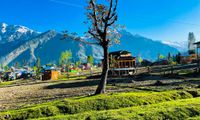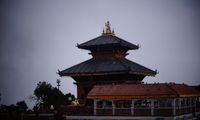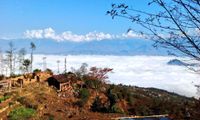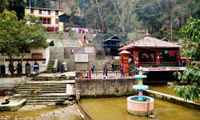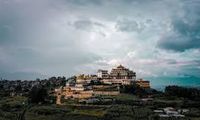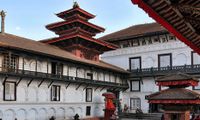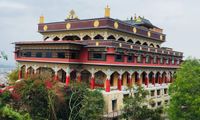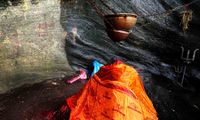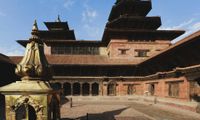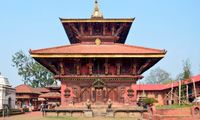Ranimahal
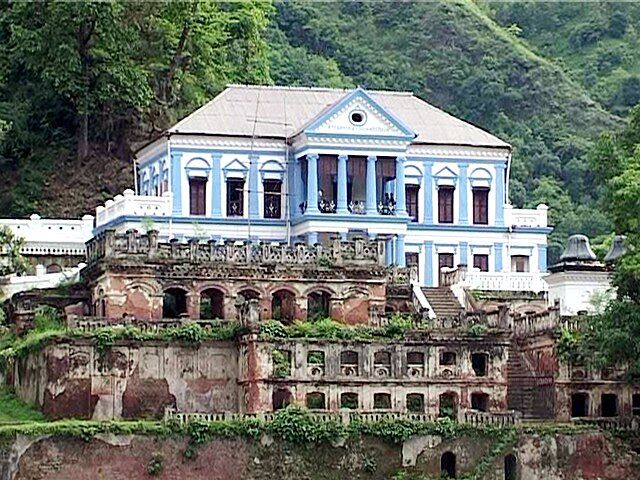
About
Ranimahal, also known as the Queen's Palace, is a historic and architectural gem located in the Palpa district of Nepal. Built in the early 19th century by Khadga Shumsher Jung Bahadur Rana for his beloved wife, Queen Tej Kumari Devi, the palace is a stunning blend of traditional Nepalese and European architectural styles. Known for its intricate wood carvings, ornate windows, and serene surroundings, Ranimahal stands as a symbol of love, culture, and heritage. Today, it is a protected heritage site, attracting history buffs, architecture enthusiasts, and travelers seeking to explore Nepal's rich past.
Locate Us
Nearby Attractions
Situated in the heart of Nepal, Ranimahal, also known as the Queen's Palace, is a stunning architectural marvel that stands as a testament to the rich cultural heritage and history of the region. Located in the Palpa district, this historic palace is a must-visit destination for history enthusiasts, architecture lovers, and travelers seeking to explore the lesser-known treasures of Nepal. With its intricate design, fascinating history, and serene surroundings, Ranimahal offers a unique glimpse into the royal past of Nepal.
The History of Ranimahal
Ranimahal was built in the early 19th century by Khadga Shumsher Jung Bahadur Rana, a prominent figure in Nepalese history. The palace was constructed as a token of love for his beloved wife, Tej Kumari Devi, who was the queen. The name "Ranimahal" translates to "Queen's Palace," and it was designed to reflect the grandeur and elegance befitting a queen. The palace served as a residence for the royal family and was a center of cultural and social activities during its heyday.
The architecture of Ranimahal is a blend of traditional Nepalese and European styles, showcasing the influence of both cultures. The palace features intricate wood carvings, ornate windows, and beautifully crafted balconies that highlight the craftsmanship of the artisans of that era. The use of red brick and white plaster further adds to the aesthetic appeal of the structure, making it a visual delight for visitors.
Architectural Brilliance of Ranimahal
One of the most striking features of Ranimahal is its unique architectural design. The palace is a fine example of the fusion of Nepalese and European architectural styles. The use of traditional Nepalese elements such as pagoda-style roofs, intricate wood carvings, and ornate windows is complemented by European influences, including arched doorways, symmetrical layouts, and decorative motifs.
The palace is spread over multiple levels, with each floor offering a different perspective of the surrounding landscape. The ground floor houses the main entrance, which leads to a grand courtyard adorned with lush greenery and beautiful flowers. The upper floors feature spacious rooms with large windows that offer panoramic views of the surrounding hills and valleys.
The interior of Ranimahal is equally impressive, with beautifully decorated rooms that reflect the opulence of the royal lifestyle. The walls are adorned with intricate murals and paintings, while the ceilings feature elaborate designs that add to the overall grandeur of the palace. The use of traditional Nepalese materials such as wood, brick, and stone further enhances the authenticity of the structure.
The Cultural Significance of Ranimahal
Ranimahal is not just an architectural masterpiece; it is also a symbol of the rich cultural heritage of Nepal. The palace has witnessed numerous historical events and has played a significant role in the social and cultural life of the region. It was a hub of cultural activities, including music, dance, and art, and was frequented by scholars, poets, and artists who contributed to the cultural richness of the palace.
Today, Ranimahal stands as a reminder of the glorious past of Nepal and serves as a source of inspiration for future generations. The palace has been recognized as a heritage site and is protected by the government of Nepal. Efforts are being made to preserve and restore the palace to its former glory, ensuring that it continues to be a symbol of Nepal's cultural heritage.
Exploring Ranimahal: A Traveler's Guide
Visiting Ranimahal is like stepping back in time. The palace is located in the picturesque town of Tansen, which is known for its scenic beauty and tranquil atmosphere. The journey to Ranimahal is an experience in itself, as the road winds through lush green hills, offering breathtaking views of the Himalayan range.
Upon arriving at Ranimahal, visitors are greeted by the majestic sight of the palace, which stands tall amidst the serene surroundings. The palace is surrounded by well-maintained gardens, which add to the charm of the place. Visitors can take a leisurely stroll through the gardens, admiring the beautiful flowers and plants that adorn the landscape.
Inside the palace, visitors can explore the various rooms and halls, each of which has its own unique charm. The grand hall, which was used for royal gatherings and ceremonies, is a must-see. The hall features a high ceiling, ornate chandeliers, and beautifully decorated walls that reflect the grandeur of the royal lifestyle.
Another highlight of Ranimahal is the balcony, which offers stunning views of the surrounding hills and valleys. The balcony is a perfect spot to relax and soak in the beauty of the landscape. Visitors can also take a guided tour of the palace, where they can learn more about the history and architecture of the place.
Preserving Ranimahal for Future Generations
Ranimahal is a treasure trove of history and culture, and it is essential to preserve it for future generations. The palace has faced numerous challenges over the years, including natural disasters and neglect, which have taken a toll on its structure. However, efforts are being made to restore and preserve the palace, ensuring that it continues to stand as a symbol of Nepal's rich heritage.
The government of Nepal, along with various cultural organizations, has taken steps to protect and restore Ranimahal. Restoration work is being carried out to repair the damaged parts of the palace and to preserve its original architectural features. The palace has also been declared a protected heritage site, which ensures that it is safeguarded from any further damage.
Conclusion
Ranimahal is a hidden gem that offers a unique blend of history, culture, and architecture. It is a place where the past comes alive, and visitors can immerse themselves in the rich heritage of Nepal. Whether you are a history enthusiast, an architecture lover, or simply a traveler seeking to explore the lesser-known treasures of Nepal, Ranimahal is a destination that should not be missed.
With its stunning architecture, fascinating history, and serene surroundings, Ranimahal is a testament to the rich cultural heritage of Nepal. It is a place that inspires awe and admiration, and it serves as a reminder of the glorious past of the region. As efforts continue to preserve and restore this magnificent palace, Ranimahal will continue to be a source of pride and inspiration for generations to come.




.jpg)





